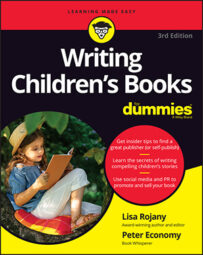Stereotyped characters in children's books are ones who are too familiar and thus wooden: the smart geek, the airhead cheerleader, the mean beauty queen. When every expectation a reader has about how a character will end up is met, you’ve created a stereotyped character. When your reader finds no contradictions or surprises related to him throughout the story, your character is in trouble.
One way to avoid stereotyping your characters is to combine traits the reader would not expect to encounter in one character. So if that mean beauty queen turns out to be moonlighting as a janitor at a homeless shelter to pay for her uniforms while conjuring up spells to cure ailing pets at the local animal shelter, then you have a potentially very interesting character.
Another way to avoid stereotyping is using a character bible to spell out unique traits and combinations of traits. What exactly makes people unique? Here are steps to creating interesting characters.
List the people you’ve known in your life who are memorable.
Don’t just list the ones you know really well who made a difference in your life. Also list the ones who were so quirky and enigmatic you just had to learn more about them and would have been willing to tag along with doing ordinary things like errands all day long — just because they were so different.
Try to identify what makes those people so memorable.
Is it the way they act around others, constantly pointing out things about the world and other people that no one else seems to see or care about? Is it how they rarely offer anything up unless they are asked — and then whoa!
Do paradoxes in their personality set them apart (such as one who is compassionate about the plight of all animals and insects great and small but who would not share his afternoon snack with another human even if you threatened to rip out his fingernails out one by one)? What is it that identifies this person as truly unique in the world?
Consider whether your character(s) can include one or several of these characteristics.
Instead of labeling a character as smart or dumb, athletic or not, get deeper into these labels and decide what they really mean to you.
For example, instead of a character developed as smart, how about one whose abilities allow him access to secret and special information others cannot access? Instead of a beautiful character, how about one who is unattractive by choice, choosing to hide her beauty in her quest to find a partner who will appreciate her for more than her looks?
When you think of memorable people, think about the ones who
Really moved you: The coach who came to a neighbor child’s house every day for a week after school to make sure the child mastered skills in a sport, thus allowing her to compete in that week’s game.
Made you laugh: The child in the classroom who had to add her two cents to absolutely everything the teacher said, regardless of what it was, and always had something compelling to add (believe it or not) because of the strange way she looked at the world.
Perplexed you: The miserable grandma who smiled only when the grandchildren left and she could play with her cats.
Try to take some of the characteristics you have described in these exercises and see whether you can use any of them to build your main character.

